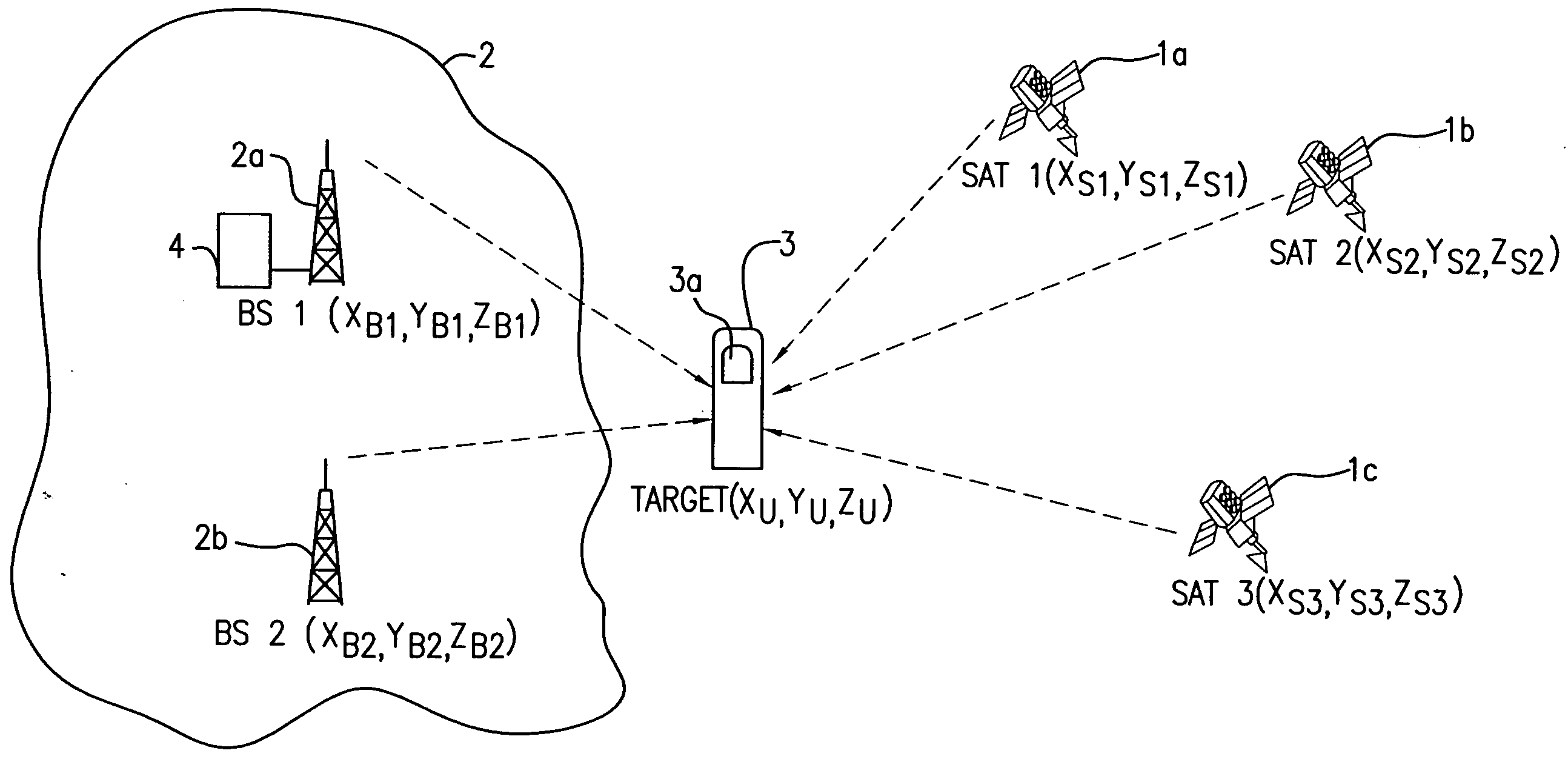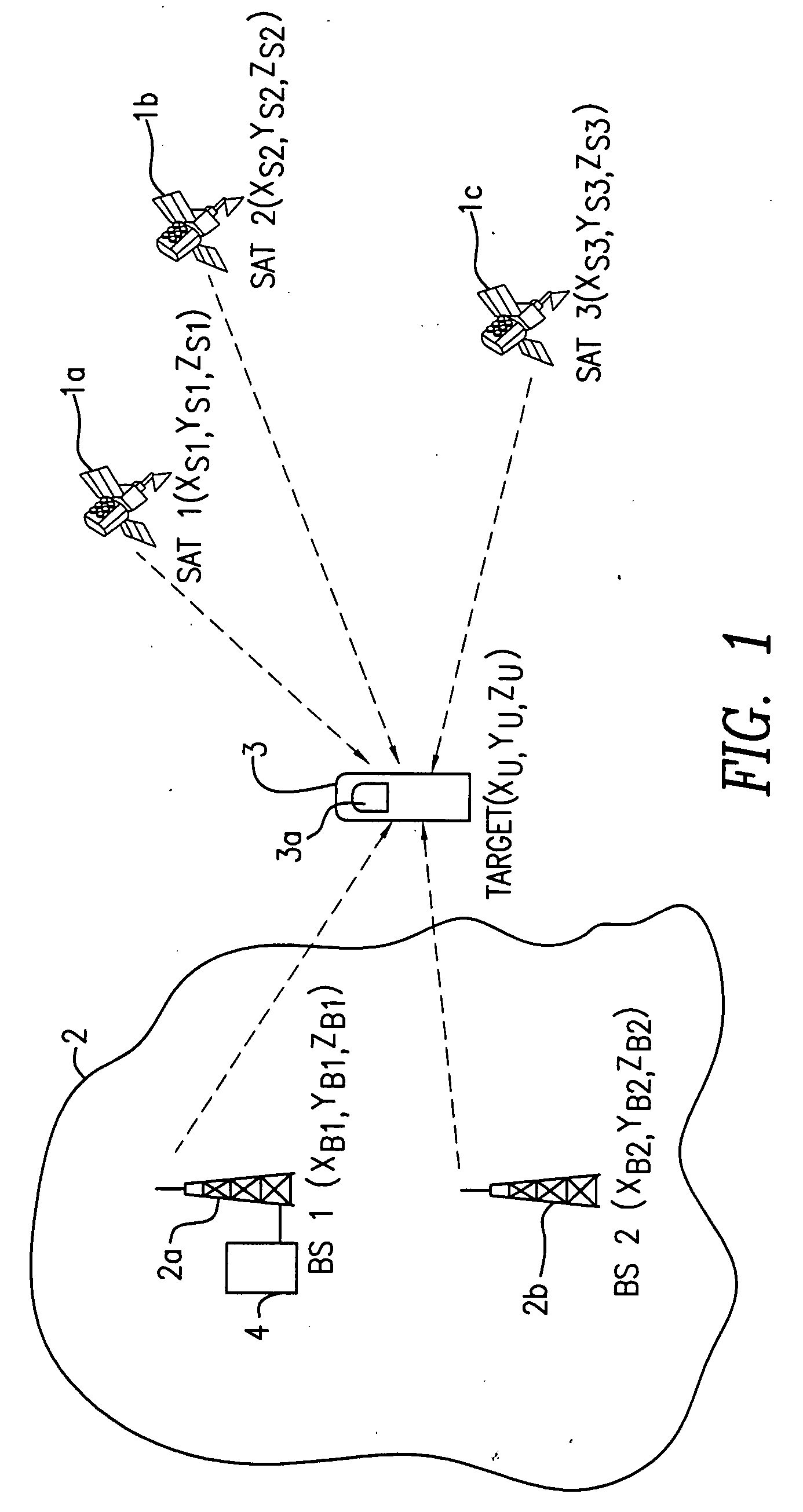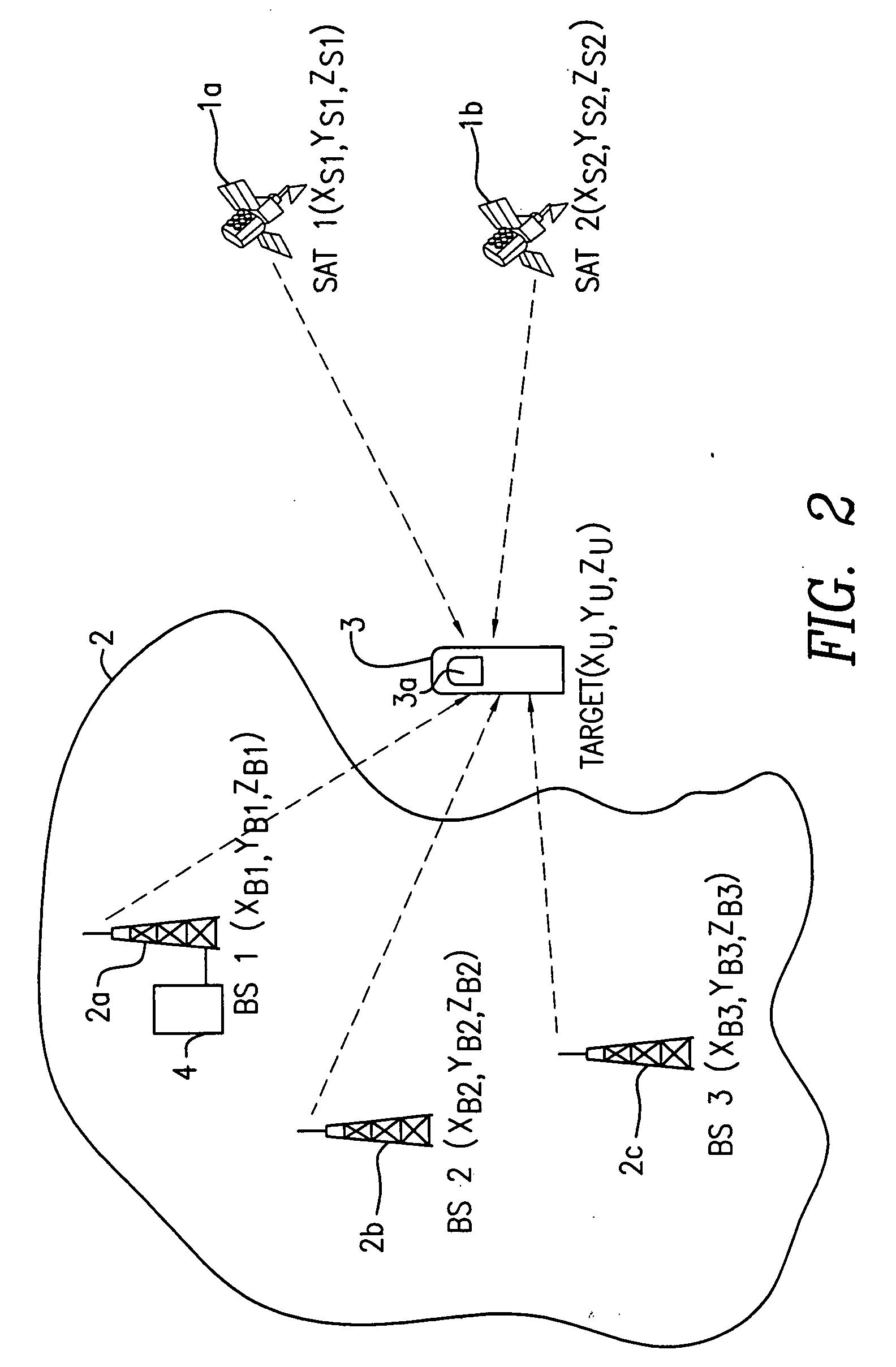Wireless network assisted GPS system
a gps system and wireless network technology, applied in the field of hybrid gps systems, can solve the problems of increasing the complexity of the problem, requiring extensive processing power, and requiring current geolocation technologies, and achieve the effect of minimizing the power consumption of the mobile unit and processing signals
- Summary
- Abstract
- Description
- Claims
- Application Information
AI Technical Summary
Benefits of technology
Problems solved by technology
Method used
Image
Examples
Embodiment Construction
Reference is made to FIG. 1, in which two base stations 2a, 2b of the wireless network 2 and three of the satellites are involved in positioning of the targeted mobile unit 3 which is equipped with a GPS receiver 3a. With the base stations 1a, 1b, the wireless network 2 maintains communication with a plurality of available satellites in space and collects information from these satellites. Like a DGPS reference receiver, the wireless network may include timing errors for each satellite.
The GPS receiver 3a of the mobile unit 3 receives ephemeris data from the three satellites 1a, 1b and 1c, which are not blocked. According to the present invention, however, the ephemeris data does not need to be extensively processed at the mobile unit 3 because of the fact that the wireless network has its own source of GPS satellite data. The mobile unit 3 only needs to decode and transmit a set of GPS parameters (pseudo-ranging measurements and satellite ID) which is needed for the position cal...
PUM
 Login to View More
Login to View More Abstract
Description
Claims
Application Information
 Login to View More
Login to View More - R&D
- Intellectual Property
- Life Sciences
- Materials
- Tech Scout
- Unparalleled Data Quality
- Higher Quality Content
- 60% Fewer Hallucinations
Browse by: Latest US Patents, China's latest patents, Technical Efficacy Thesaurus, Application Domain, Technology Topic, Popular Technical Reports.
© 2025 PatSnap. All rights reserved.Legal|Privacy policy|Modern Slavery Act Transparency Statement|Sitemap|About US| Contact US: help@patsnap.com



